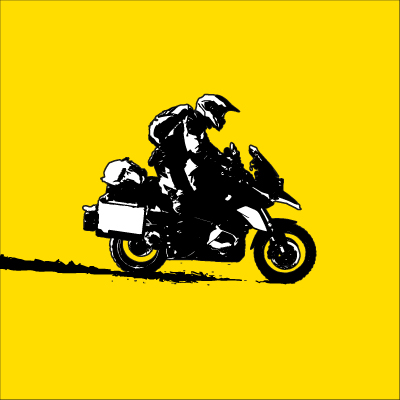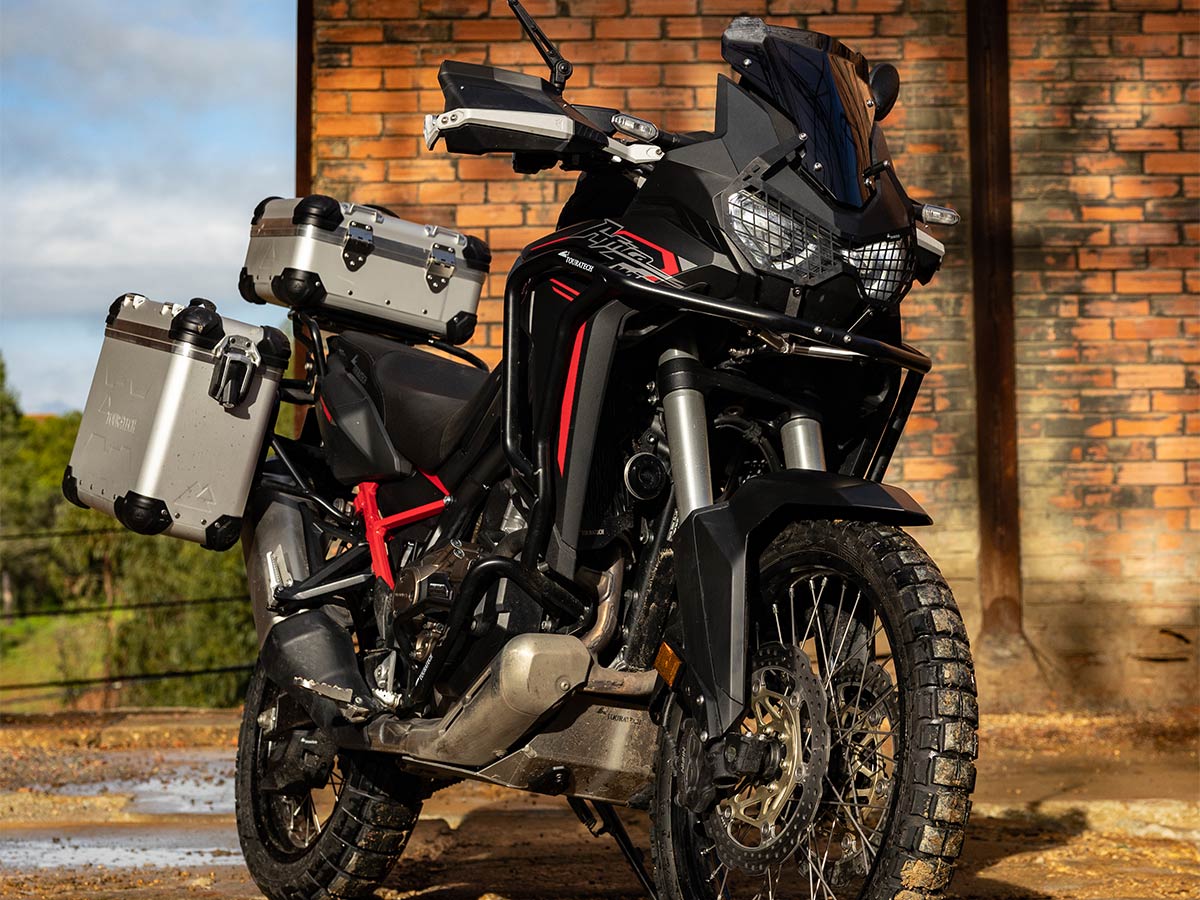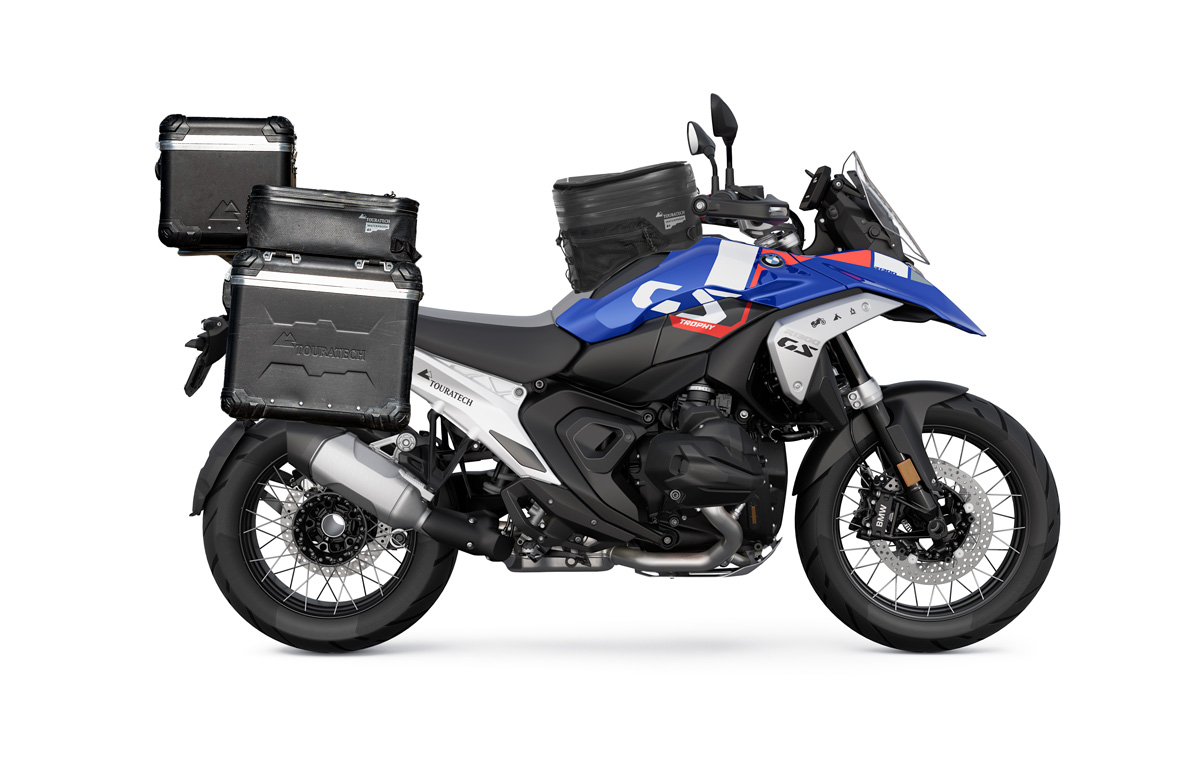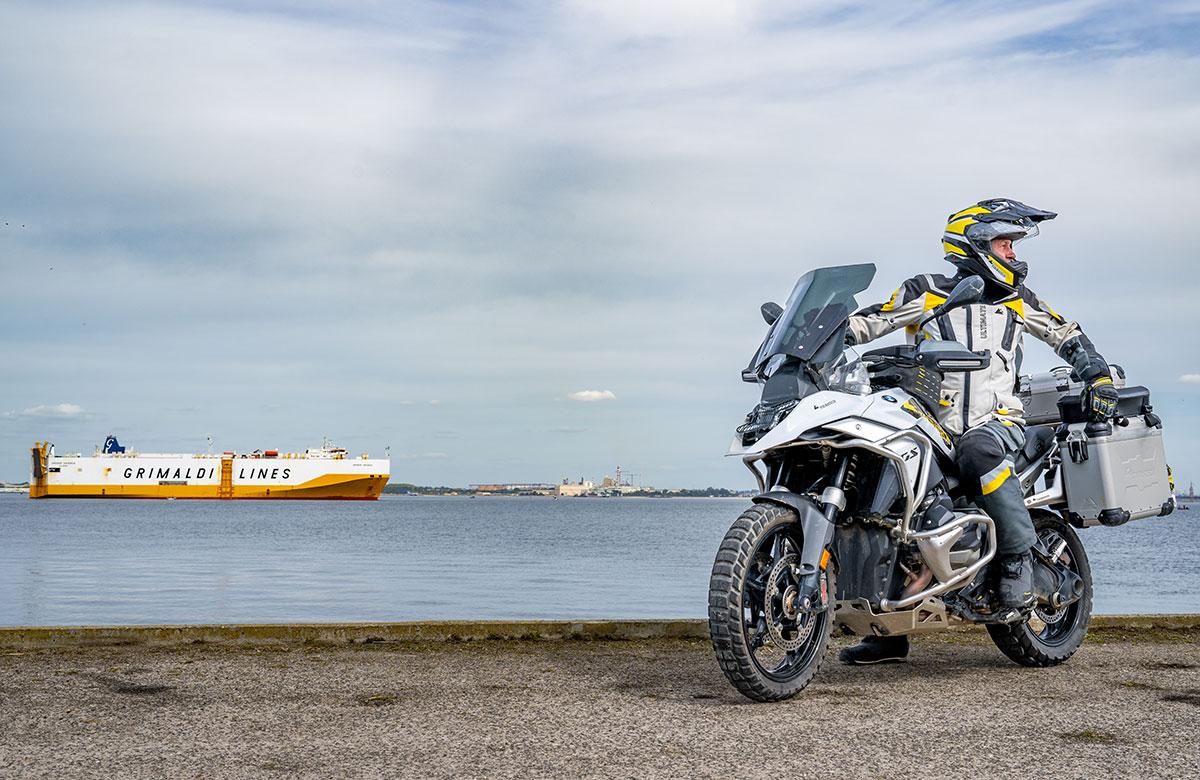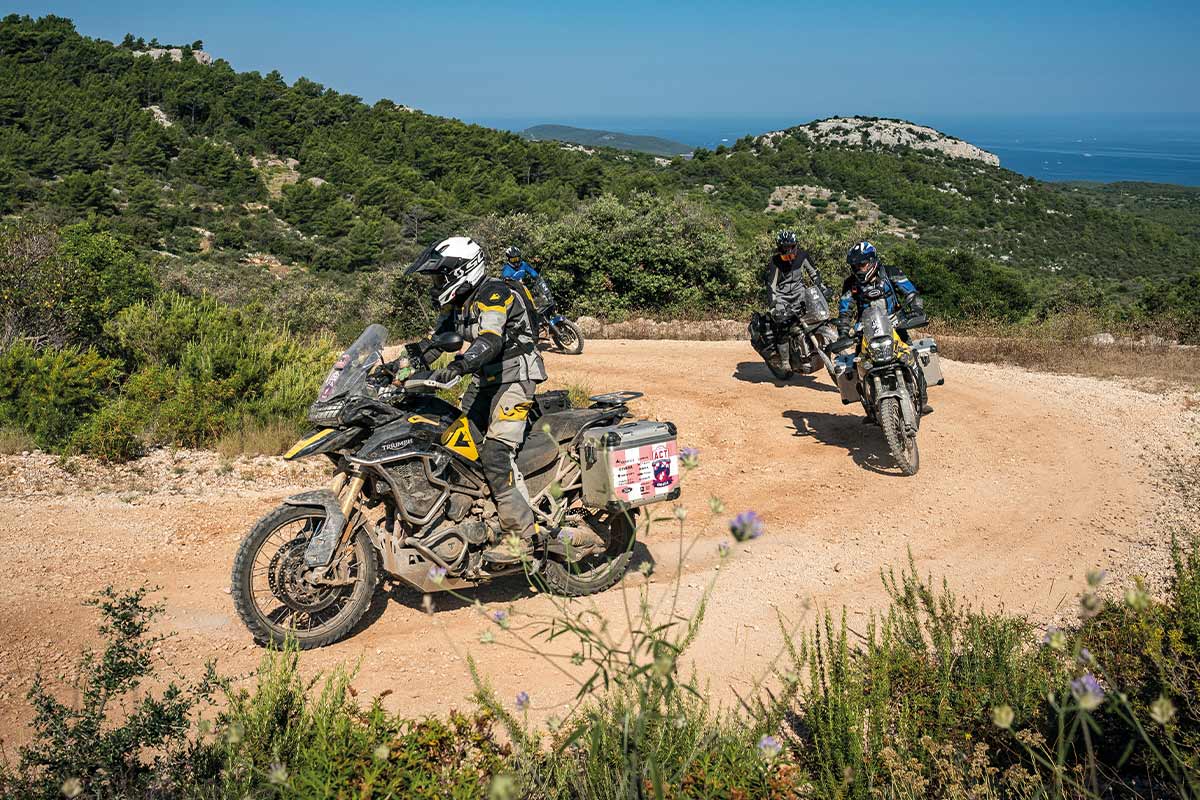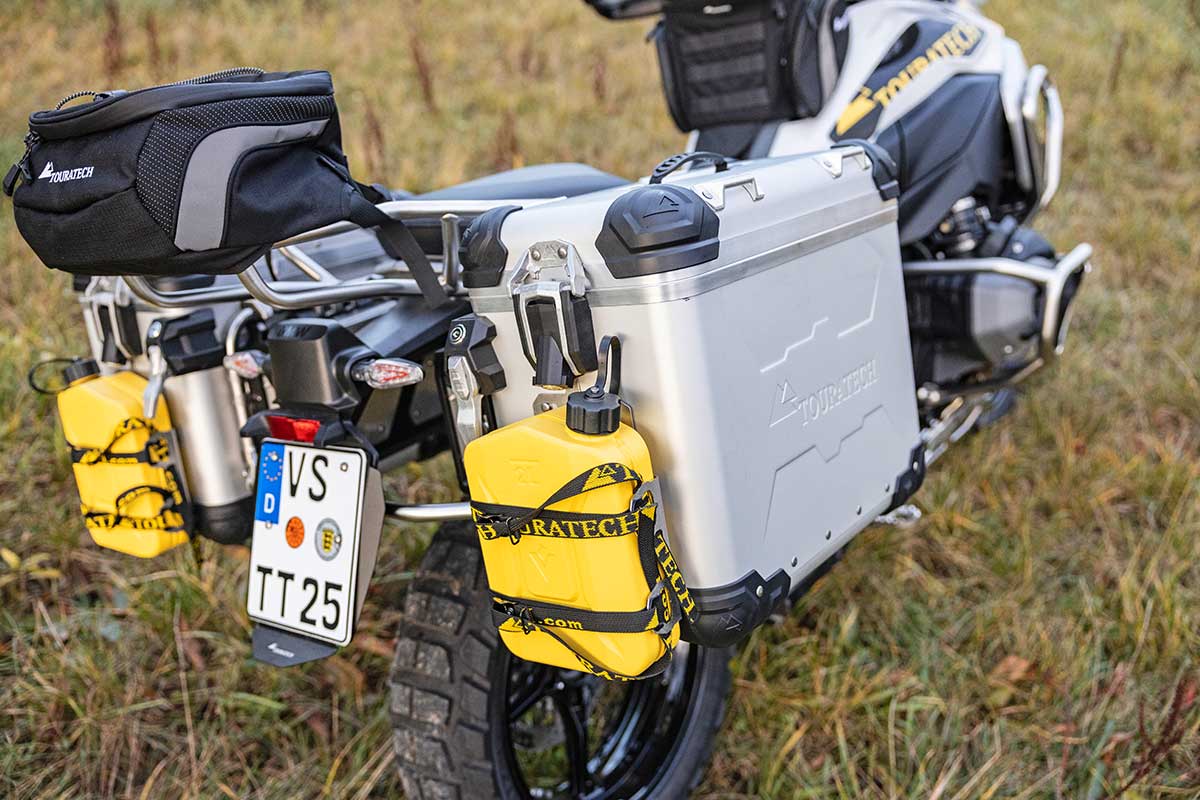Travel | South America – Back to Patagonia!

For three months, Michael Schröder travelled through Patagonia on a BMW R1250 GS – and followed the trace of a trip he had done once before, 30 years ago.
Text and pictures: Michael Schröder
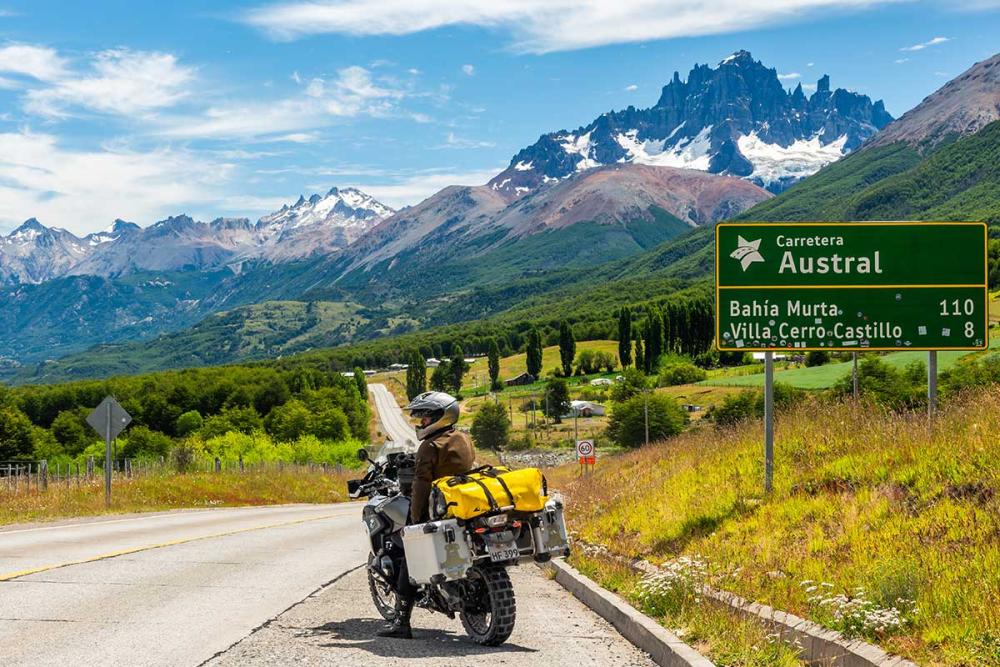
The Carretera Austral leads 1247 kilometres into Chile’s wild south
The decision had been made for some time: I had to go back again. To Patagonia. It was the images in my head from back then that left me no peace. Images of endless vastness, of unearthly beautiful mountains, of rainforests, volcanoes and shimmering turquoise lakes and lagoons, on whose shores I had already pitched my tent many, many years ago: as a student, I had set off in December 1989 to spend six months travelling on a BMW R 80 G/S through this stormy south of Chile and Argentina, which goes by the name of Patagonia – a vast country, as boundless as my longing for a great adventure. And it was a great adventure that exceeded all expectations. Happiness was suddenly more than just a word for me, it had become tangible. And to this day, it is still inextricably linked to this journey.
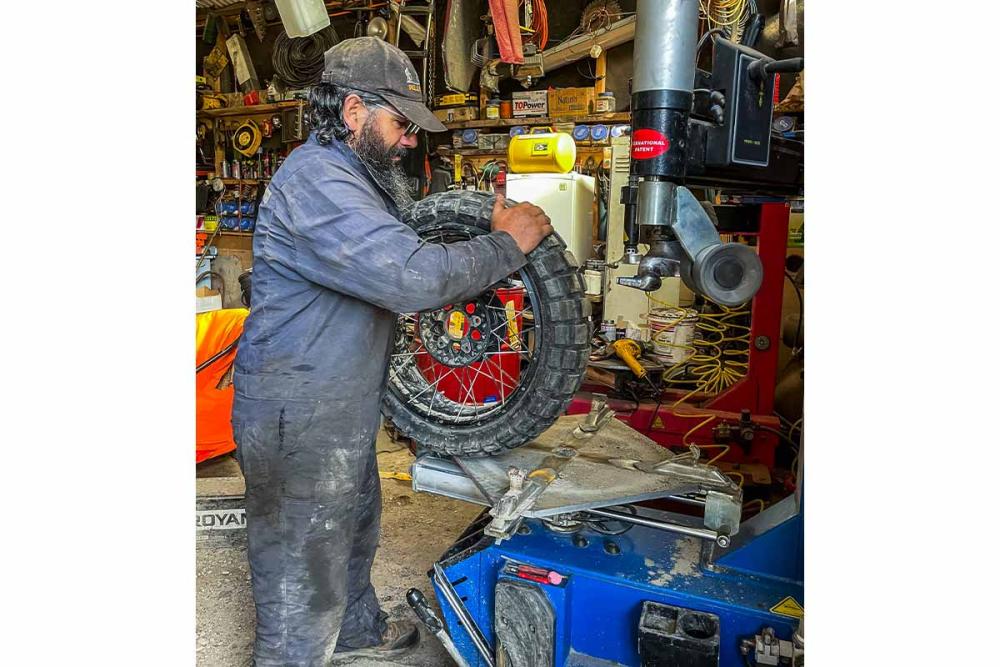
Tire service at world’s end
Viña del Mar, Chile, 4 January 2023, kilometre zero: My BMW is now fully loaded and parked in the courtyard of the guesthouse where I have settled in for the first few days. All I have to do now is get on the motorcycle, start the engine and drive off. I've waited a long time for this moment, I've spent a year planning and organising for it, and I've always imagined what it will be like: Driving off.
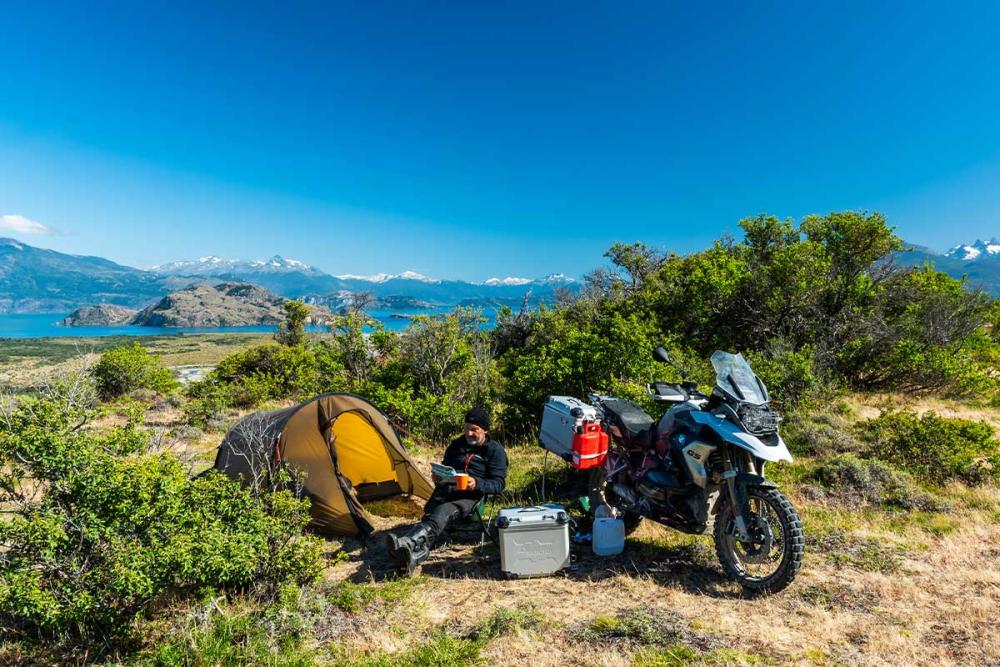
Camp at the Lago General Carrera
The book about the journey
With stories and pictures about his three-month motorbike trip through Patagonia, Michael Schröder has written a declaration of love to the southern tip of the South American continent. The high-quality illustrated book, with its detailed information section, can also be seen as an instruction manual: It is intended to inspire travellers to travel to the most beautiful end of the world. “Sehnsucht nach Patagonien“ (Longing for Patagonia), Motorbuch Verlag, 240 pages, 450 illustrations, ISBN 978-3-613-0-4594-1, price: 49.90 euros.
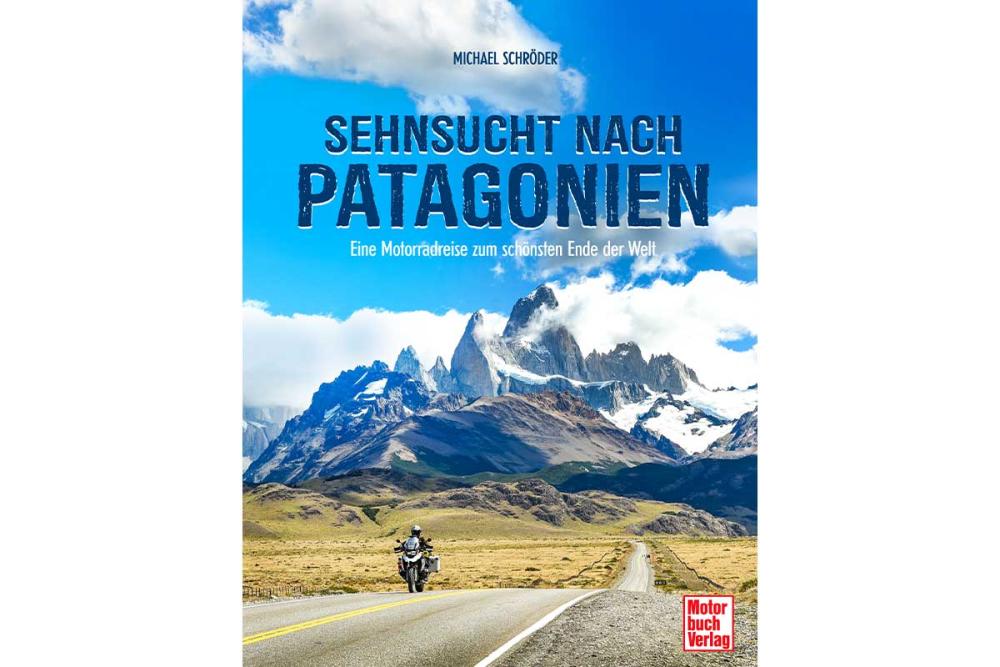
It is – quite simple. The gate opens, I roll out and turn onto a wide main road that takes me out of the city and further southward. I have no fixed destination today, no pre-booked hotel, just a direction. 100 kilometres or maybe 500? Hard to say. Everything will depend on how quickly we get used to each other, this fully loaded BMW and me. In fact, my last long motorbike trip was 18 years ago, so I'll have to get used to a lot of things again. But it's good to finally be on the road again. The next three months - a two-month mini-sabbatical plus four weeks of holiday – are now just for me and my dream: back to Patagonia!
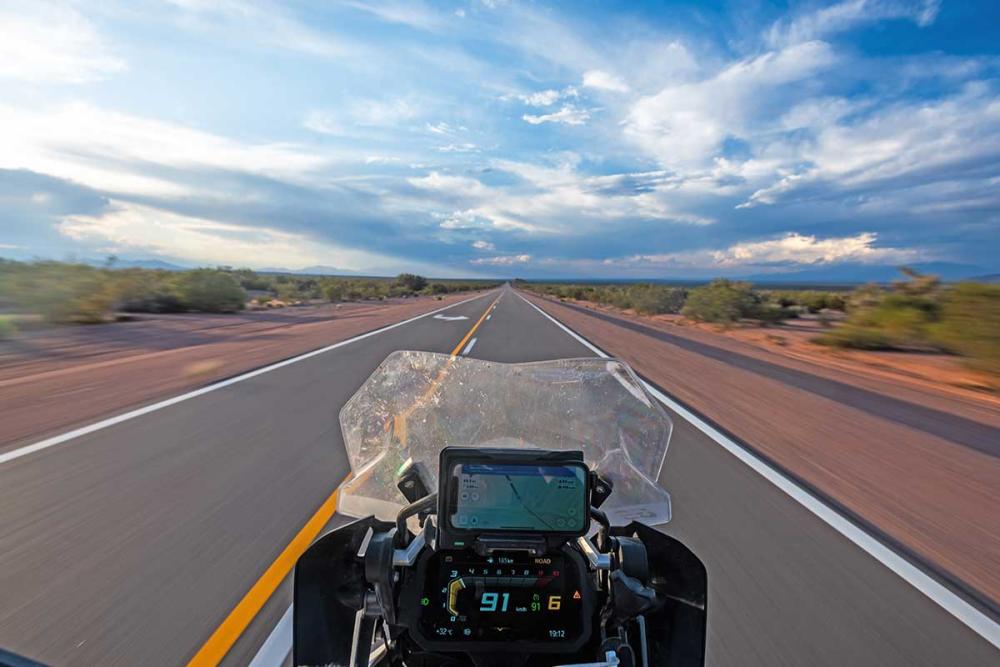
In Argentina, the legendary highway Ruta 40 often leads through seemingly endless steppe as though it was drawn with a ruler.
I make good progress, but mainly because this central part of Chile is not particularly attractive. This also applies to the "Ruta 5", the country's lifeline, which is also a section of the Panamericana, but completely unromantic and resembles a two-lane motorway. In the evening, within earshot of the Laja waterfalls, I pitch my tent for the first time in 20 years. But all the movements are still there, as if I had never travelled any other way. And the feeling in my head is still the same, despite the confinement in the tent, the heat and the dust: this moment truly tastes of freedom! Yes, that's exactly how it used to feel!
Further south. To the left of the road, one volcano after another rises out of the green plain, including Lonquimay, Llaima and finally the smoking Villarrica. This section of the country is called La Araucanía and is already part of Patagonia. It is reminiscent of a mixture of Canada and Switzerland, except for the volcanoes of course. I head east towards the Andes, cross over into Argentina and continue south along the legendary Ruta 40, the Cuarenta. It gets wilder and lonelier, I camp a lot, bathe in rivers and lakes, and feel that I am becoming more relaxed, that my head is gradually clearing for this adventure. In the meantime, the GS and I have finally become friends, everything is set, fits and works. We are ready for this trip to the end of the world.
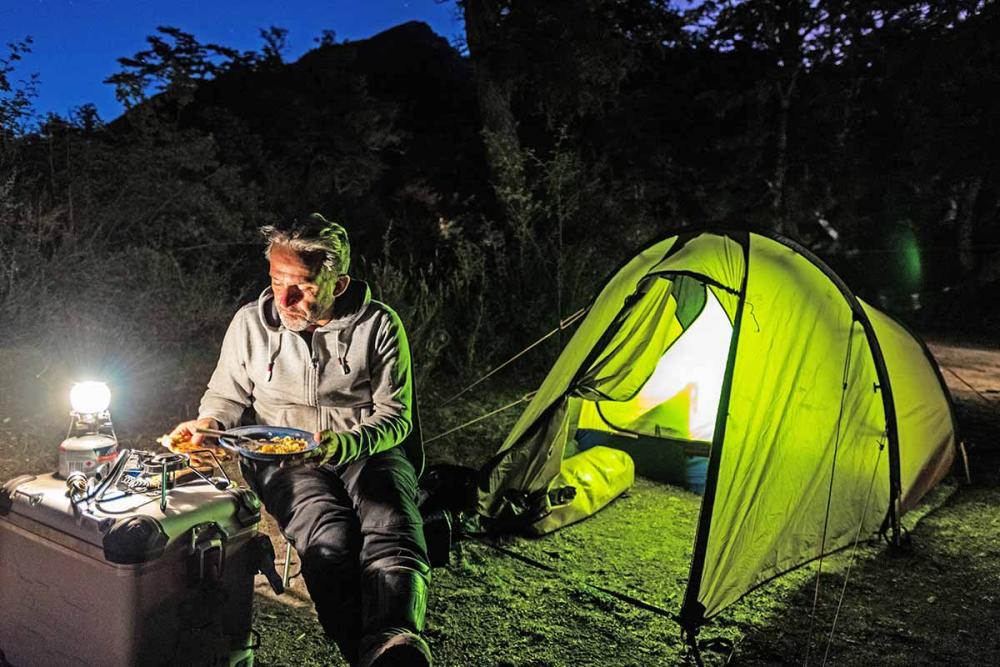
Wild Camping? No problem in the southern parts of Chile and Argentina
Chaitén, Chile, 17 January, 2,830 kilometres: We travel along the Carretera Austral, Chile's great adventure road, which leads deeper and deeper into this otherwise inaccessible south of the narrow country, only to finally capitulate after a wild 1,247 kilometres to the inaccessibility of an increasingly magnificent fjord, glacier and mountain landscape. Alaska, Scandinavia or rather Scotland? I have long since lost my geographical bearings, but I am all the more pleased that this road is well developed for the time being. When I drove along here in January 1990, it was a simple corrugated iron track. At best.
South of Coyhaique, however, this road has remained true to its formerly wild reputation for its last 500 kilometres: sand and gravel, while the boldness of nature around us knows almost no bounds. In Villa O'Higgins, a charming mixture of military outpost and pioneer settlement within sight of the Patagonian inland ice, we finally come to the end. If, like me, you want to go further south, you first have to drive back 360 kilometres to cross over into Argentina at Lago General Carrera.
Perito Moreno, Argentina, 30 January, 4,370 kilometres: South of the small town, the Ruta 40 disappears into this seemingly endless steppe that makes up the eastern two-thirds of Patagonia. Yellow-grey land as far as the eye can see. The "Cuarenta" runs dead straight for many hundreds of kilometres, so I drive through a vast void. But there is no boredom, on the contrary: This vastness turns out to be an event, shifting every known dimension and having an incredibly meditative effect. What's more, the wind is constantly tearing at your helmet, your arms and your motorbike, and sometimes the gusts are so strong that the bike even threatens to veer off course for a moment. But I have longed for exactly this kind of Patagonia for years.
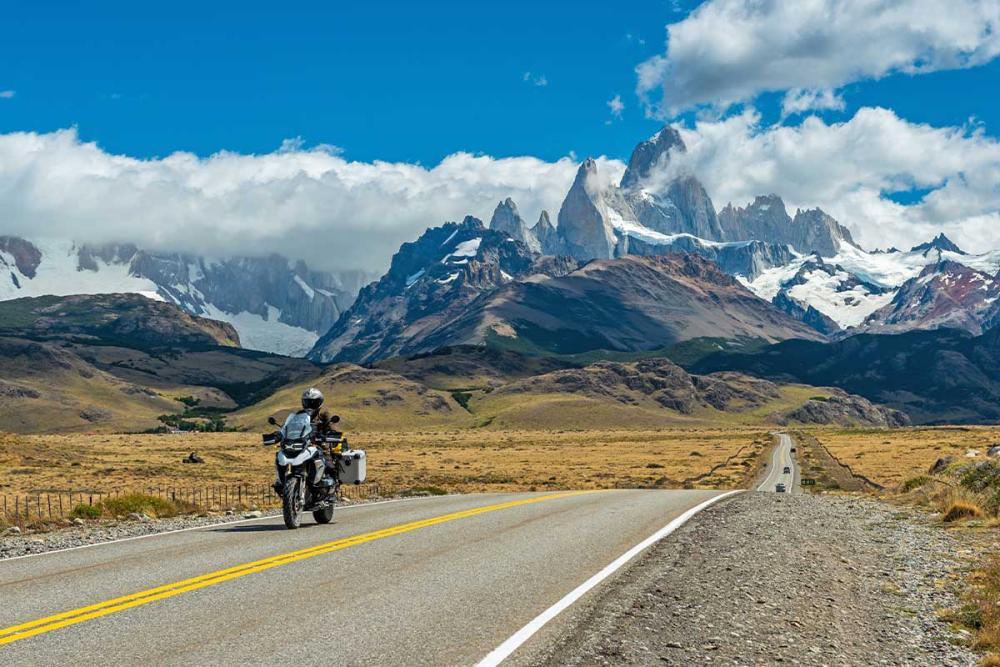
The view of this wildly jagged mountain range with the 3,406-metre-high Fitz Roy is one of the most spectacular panoramas in Patagonia.
El Chaltén, Argentina, 2 February, 5,203 kilometres: I head west along the northern shore of Lago Viedma, excited and looking forward to a very special reunion. And then it appears! At first, it's just a spike, but it quickly grows into a gigantic monolith, surrounded by snowfields and in the middle of a Grail castle made up of other angry rock needles, but towering over them all. It is the Fitz Roy, the king of Patagonia's mountains. 3,406 metres of pure granite, the top two kilometres of which are smooth and vertical as if walled in. I stop and gaze for a long time at this mountain that I stood in front of so many years ago. I can hardly believe my luck. But now I know that I'm back in Patagonia for good. A few days later, bad weather forces me to make a major change of course: all was still well at the mighty Perito Moreno Glacier, while a storm had been raging for days in the Torres Del Paine massif further south. I decide to first drive to the end of the world on Tierra del Fuego and then try the Paine Mountains again later, even if this change of route causes a lot of extra kilometres. No matter.
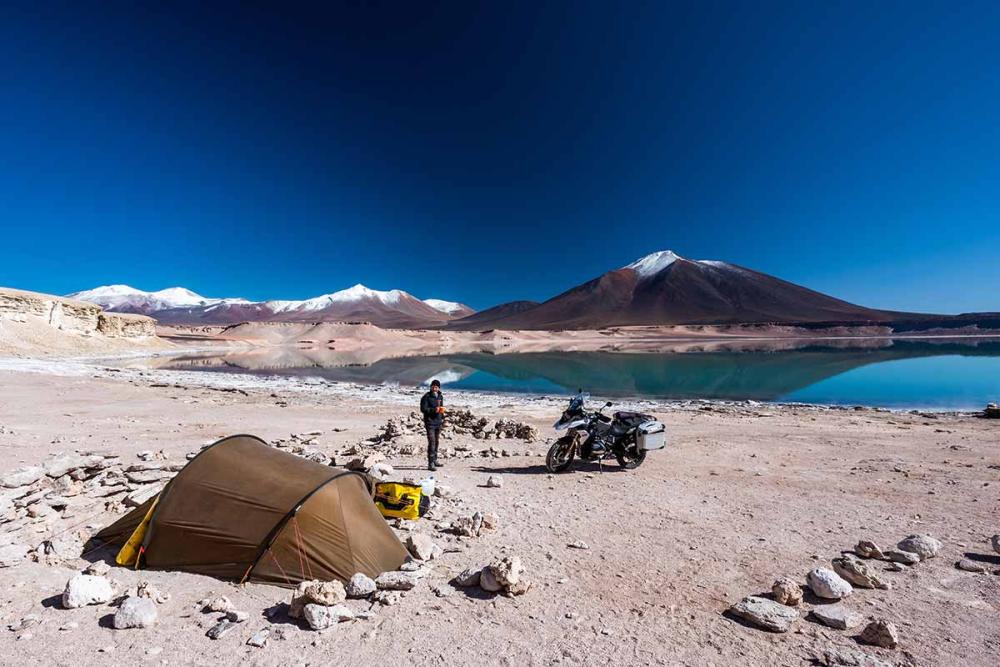
Camp for the night at the river bank of the 4,300 metres above ground level Laguna Verde at the Western ramp of the Paso de San Francisco
Ushuaia, Argentina, 10 February, 6,650 kilometres: Suddenly, behind a long bend, the entrance to the southernmost city in the world: a portal consisting of two towers on which Ushuaia is written in large letters. A few kilometres further, on the banks of Bahia Lapataia, the road finally ends, and a few corners later, at Cape Horn, the continent ends too. In March 1990, almost exactly 33 years ago, I had already stood at this spot. The feeling of having arrived here on a motorbike for the second time? Magnificent!
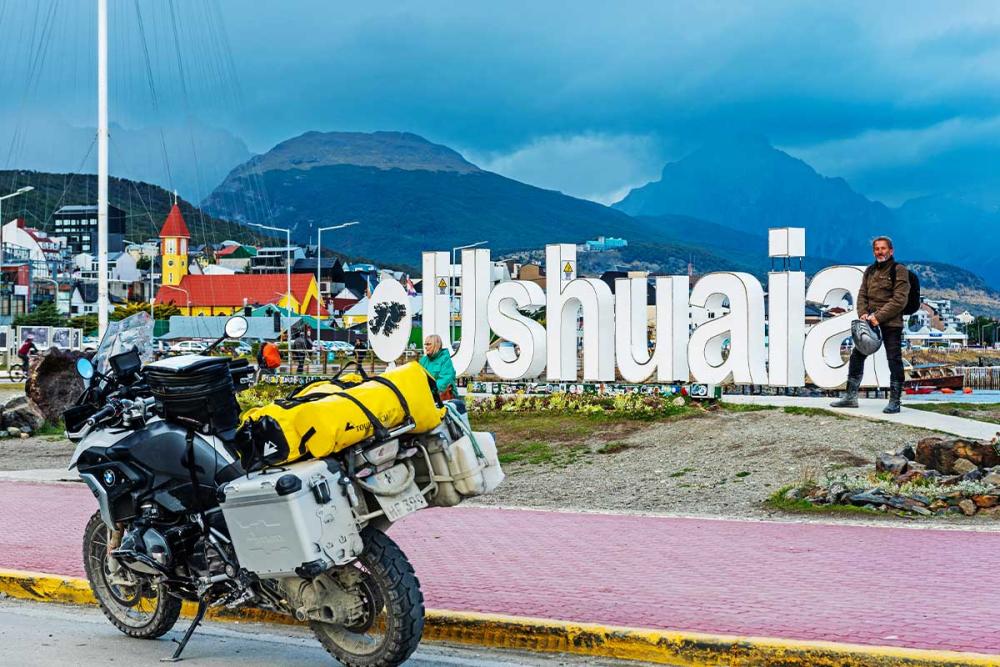
Arrival in Ushuaia, the southernmost city in the world on Tierra del Fuego
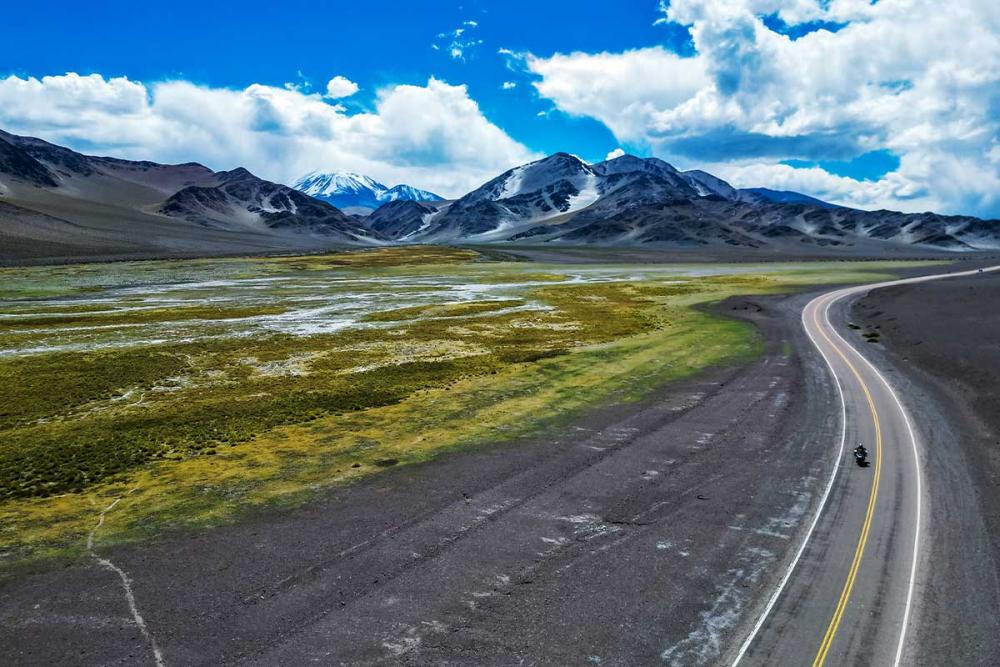
The Eastern ramp of the 4,725 metres high Paso de San Francisco
Torres del Paine, Chile, 19 February, 7,900 kilometres: The sight of the wildly jagged Paine Mountains hits me with full force. I can't imagine a more beautiful mountain range, and after four days I can hardly tear myself away from my spot by the shimmering turquoise waters of Lake Pehoé. I feel that I have finally arrived in my dreamland and try to delay my departure: if I start the GS now, the journey back will begin.
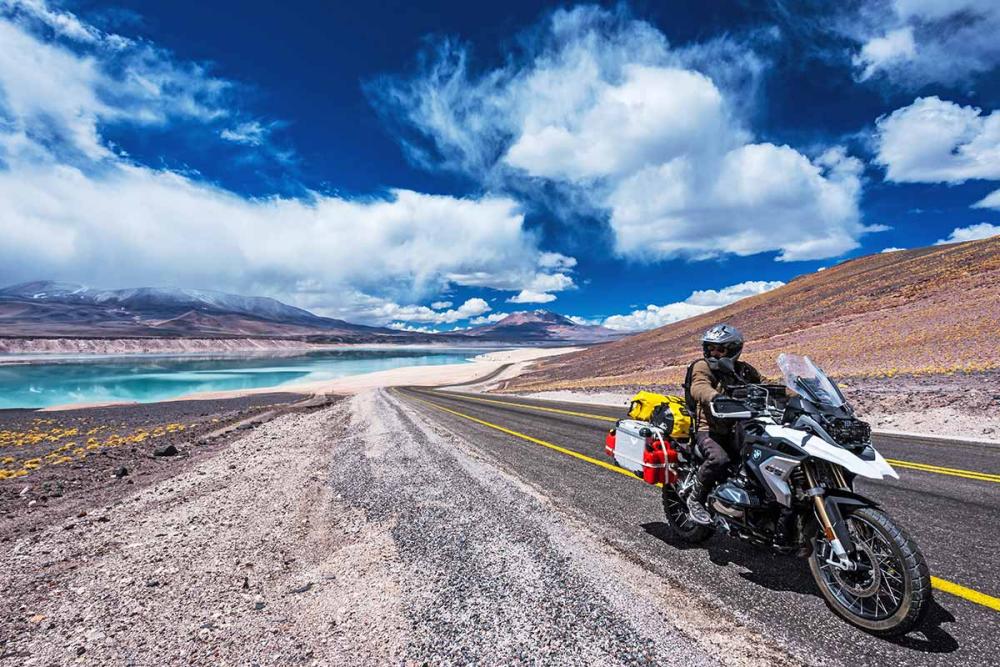
One last look back at the spectacularly situated Laguna Verde in the Andes of northern Argentina
Fiambala, North Argentina, 15 March, 13,800 kilometres: The last three weeks - one big frenzy! The almost 2,600-kilometre drive along the east coast of Argentina, the days in Buenos Aires, the way back to the bottom of the Andes near Mendoza - the impressions are truly unparalleled. Or are they? I'm standing on the eastern ramp of the San Francisco Pass, which is over 500 kilometres long from here to the next town on the Chilean side and leads up to an altitude of 4,725 metres – familiar alpine dimensions lose their meaning here. With ten extra litres of petrol and twelve litres of drinking water, I disappear into this mountain world, which is dominated by several volcanoes over 6,000 metres high. I'm so exhilarated on the pass that I don't even realise how breathless I am. The BMW doesn't complain about the exertions here either, it hasn't even asked for a drop of oil yet.
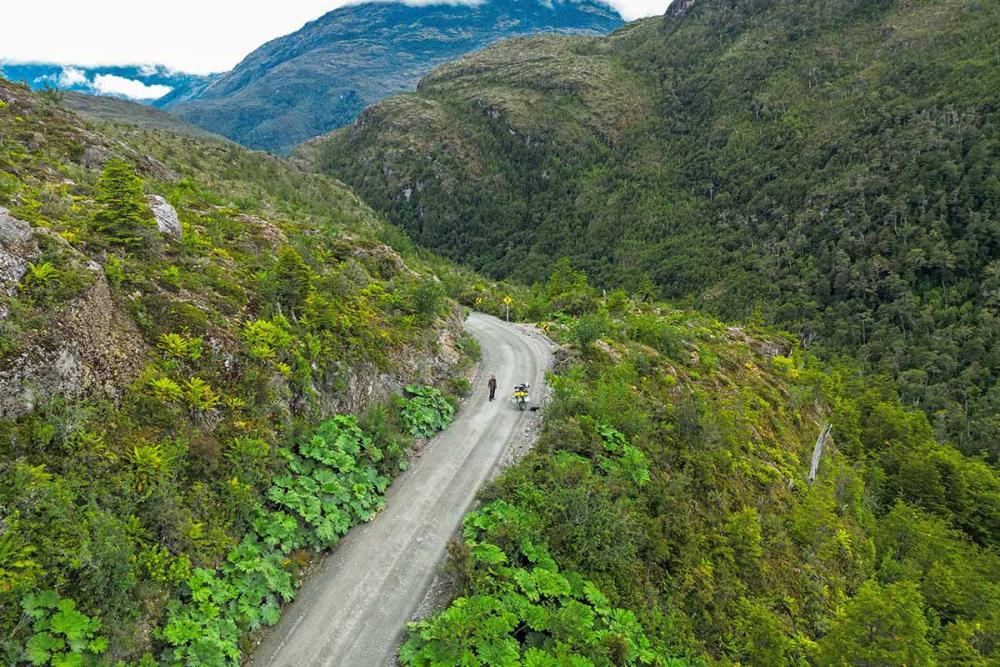
The last 500 kilometres of the Carretera Austral are unpaved
A few kilometres further on is Laguna Verde, a shimmering turquoise jewel at an altitude of 4,300 metres. I stop on the shore, set up my tent and enjoy the absolute tranquillity that reigns in this magical place, but also the feeling of total solitude. When I crawl out of my sleeping bag the next morning and feel the first warming rays of sunshine in the middle of this magnificent panorama at zero degrees, I feel infinitely satisfied.
The bad news comes in the early afternoon: the Chilean border post is closed for the next three days. As I don't have enough petrol or drinking water for the trip back to Argentina, I enter Chile anyway and immediately report to the authorities in Copiapó, 100 kilometres away. However, the officials are very strict: I am officially undesirable and have to leave Chile by the end of March. I am also banned from entering the country for the next ten years. The only consolation: my trip is almost over anyway.
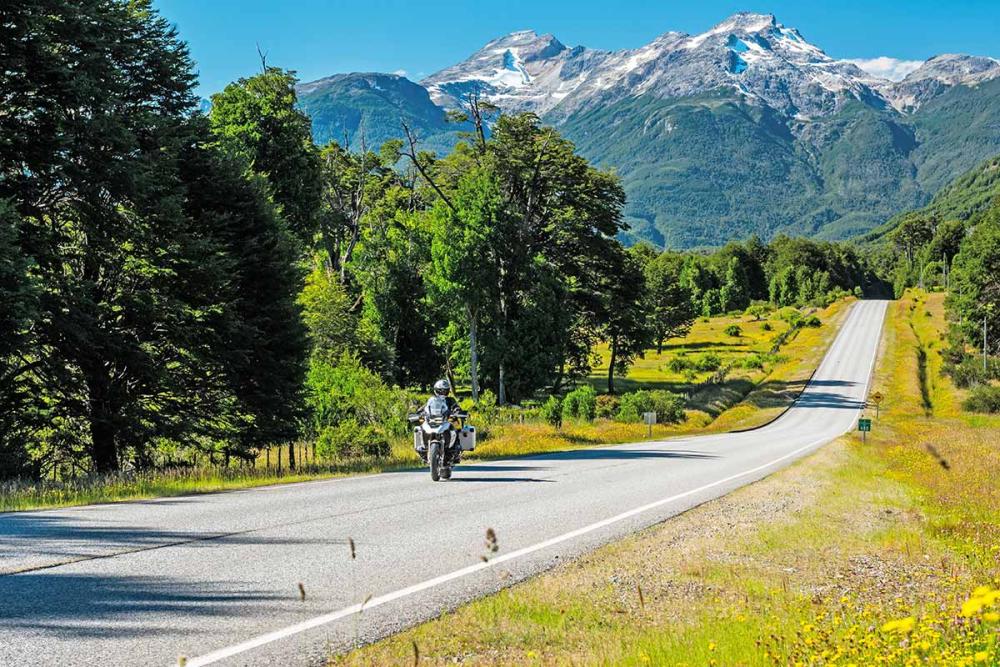
The south of Chile is sometimes reminiscent of the Allgäu, with a pinch of Alaska thrown in for good measure
Viña del Mar, 27 March, 15.805 kilometres: After 83 days, it is all over in earnest. But it felt good to follow the old mental pictures and make the journey once more. Very good indeed.
The motorcycle
The BMW R 1250 GS was specially prepared by Touratech for this journey. The most complex conversion work was certainly the installation of the latest generation of the semi-active Plug & Travel EVO suspension from Touratech Suspension, which noticeably improved the already excellent handling characteristics of the R 1250 GS.
The GS was also fitted with a sturdy ZEGA Evo case system with a capacity of 38 and 45 litres and the corresponding inner pockets. A lockable toolbox was mounted on the left pannier rack so that tools are always to hand. A double USB socket in the cockpit provided power for the mobile phone or the camera batteries during the ride. Many other parts were fitted to protect areas of the motorbike that are particularly susceptible to falls or road stone, including the two water coolers, the rear brake fluid reservoir, the exhaust flap, the front ABS sensor, the headlight, the TFT display, the brake and clutch levers and the starter motor. In view of possible river crossings, a hose was used to route the gimbal ventilation. The crash bar, cylinder and engine guards, on the other hand, remained in their original condition. Replacing the original two-piece seat with a one-piece seat was a matter of personal taste.
Travelling information
Arrival and entry
Santiago de Chile is served by numerous airlines from Germany, but unfortunately not directly. Return flights cost from around 900 euros. A passport, national driving licence and national vehicle registration document are sufficient to enter Chile (90 days). The following motor insurance is also required for the motorbike for the time in Chile: SOAPEX (Seguro Obligatorio de Accentes para Vehículos Extranjeros). The insurance can be taken out online via HDI Seguros (www.hdi.cl), costs around 60 euros for three months. A Carnet de Passages is not required for either Chile or Argentina.
Motorcycle transport
The BMW arrived by ship in a consolidated container exclusively for motorbikes from Hamburg to San Antonio, Chile, which is about 90 kilometres south of Valparaiso/Viña del Mar. The transport took five weeks and was organised by the Hamburg-based forwarding company In Time Forwarding & Courier. Both journeys combined for a loaded motorbike, including all additional costs, cost 2,650 euros (as of December 2022). All information: www.intime-ham.com.
Climate and travelling time
Only the South American summer months from December to April at the latest are suitable for a motorbike trip to Patagonia. Around Santiago and in the central part of Chile, temperatures can reach up to 40 degrees, and the further south you go, the cooler it gets: In the south of Patagonia, it can be below ten degrees. The wind usually blows constantly and sometimes extremely strongly, and rain is always to be expected, especially in western Patagonia.
Money
In Chile, as in Argentina, almost everything can be paid for by credit or even debit card, and ATMs can be found almost everywhere in towns and cities. Visa card holders pay no fees (as of spring 2023). However, there are two exchange rates for the US dollar in Argentina: The official one and an unofficial one called "Dollar Blue", which gives you almost twice as many Argentine pesos per US dollar. Many private individuals are willing to exchange at the Dollar Blue rate, which is also often offered in hostels or hotels.
Communikation
You should have a basic knowledge of Spanish; English only works in the rarest of cases. Local SIM cards, which are available everywhere, are recommended for phone calls. Wifi is now also available at every petrol station. A tip: Pre-install an eSim (e.g. Airalo) for the country in question, which will then automatically activate the phone when you cross the border. In many parts of Patagonia, but also in the Andes, there is no mobile phone network, so you cannot call for help in the event of a breakdown or accident. The only remedy in such regions is a satellite communication device such as the handy Garmin inReach Mini 2, which can be used to communicate with a rescue centre from anywhere in an emergency and which will then organise help as far as possible.
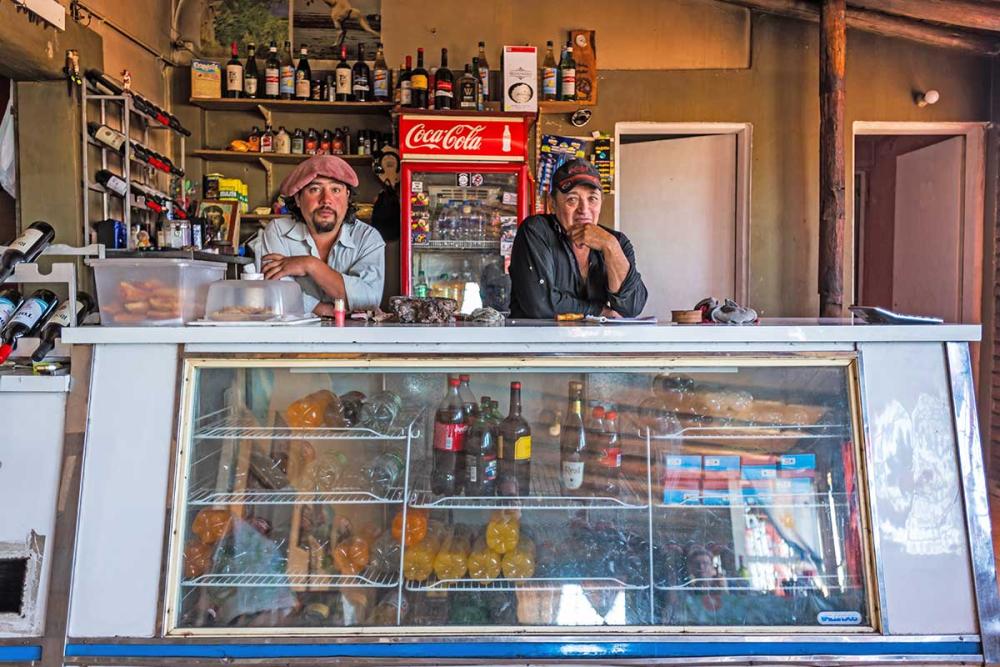
Kiosk and restaurant in one
Accomodation
Hostels, guesthouses, hotels and campsites can be found everywhere and in all price ranges in Patagonia. However, many accommodations in the tourist centres are usually fully booked well in advance in January and February. Wild camping is not a problem in remote regions.
Maps and literature
The standard works are "Chile and the Easter Islands" by Stefan Loose Travel Handbooks and "Argentina" by Lonely Planet. The following maps are recommended: "Chile" at a scale of 1:1,600,000, "Argentina" at a scale of 1:2,000,000 and "Patagonia" at a scale of 1:1,400,000 - all from “Reise Know-how”.


